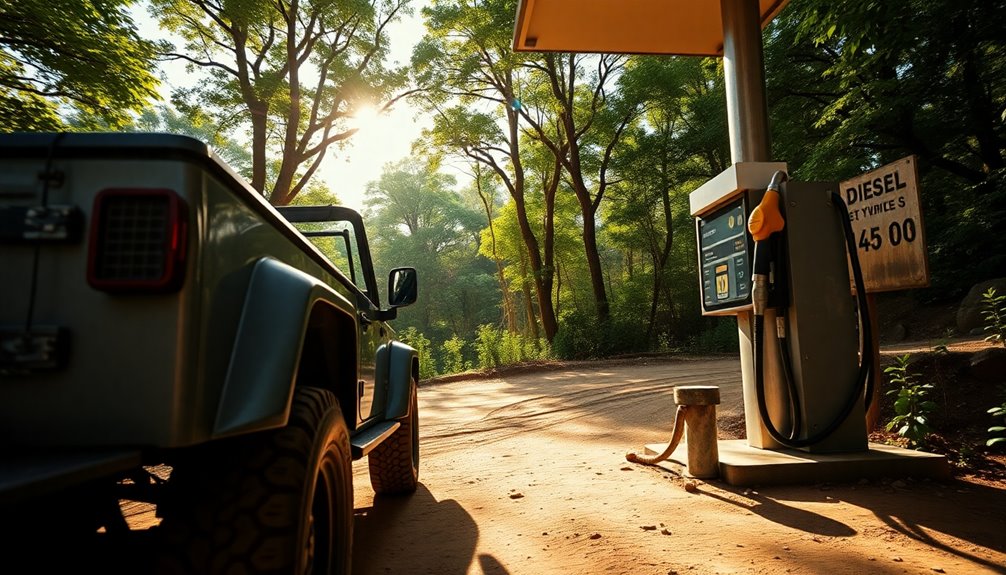After a crash, you should only move your vehicle if it's safe and necessary. If the vehicle obstructs traffic, and you can safely relocate it, do so to prevent further accidents. Check for injuries among occupants first. If there are serious injuries or significant damage, don't move the vehicle; this could worsen the situation or hinder investigations. Use hazard lights to signal to other drivers when you do move. Prioritize everyone's safety while managing the aftermath. Keep exploring for more insights on how to handle these situations effectively.
Key Takeaways
- Move your vehicle off the road if it obstructs traffic and it's safe to do so.
- Always check for injuries among all occupants before relocating the vehicle.
- Use hazard lights to signal your movement to other drivers, especially in low visibility.
- Do not move the vehicle if serious injuries are involved or if hazardous conditions exist.
- Prioritize safety and wait for professional assistance if the situation is critical.
Texas Crash Statistics Overview
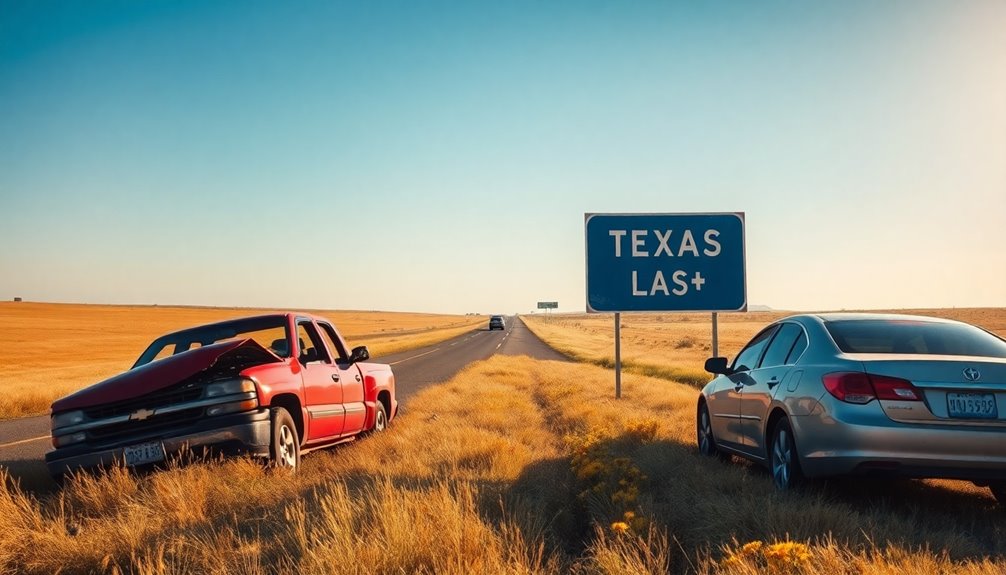
When you consider the frequency of crashes in Texas, it's alarming to note that a reportable accident happens every 57 seconds. The sheer number of vehicles on the road contributes to this staggering statistic.
In 2022 alone, there were 265,076 total injuries reported from crashes, with 17,582 of those classified as serious injuries. This highlights the essential importance of road safety.
Fatalities are also a serious concern, with one occurring every 2 hours and 20 minutes. You might be surprised to learn that over 43% of these fatalities involved individuals who weren't wearing seat belts. This statistic emphasizes how crucial it's to buckle up in your Texas car.
Among the fatalities, 1,293 were due to single-vehicle run-off-road incidents, accounting for 34% of total deaths. These numbers serve as a stark reminder of the risks associated with driving.
Whether you're maneuvering city streets or rural highways, being aware of these statistics can help you prioritize safety. Understanding the prevalence of crashes and the injuries they cause can motivate you to drive defensively and be more cautious on the road.
Legal Responsibilities After a Crash
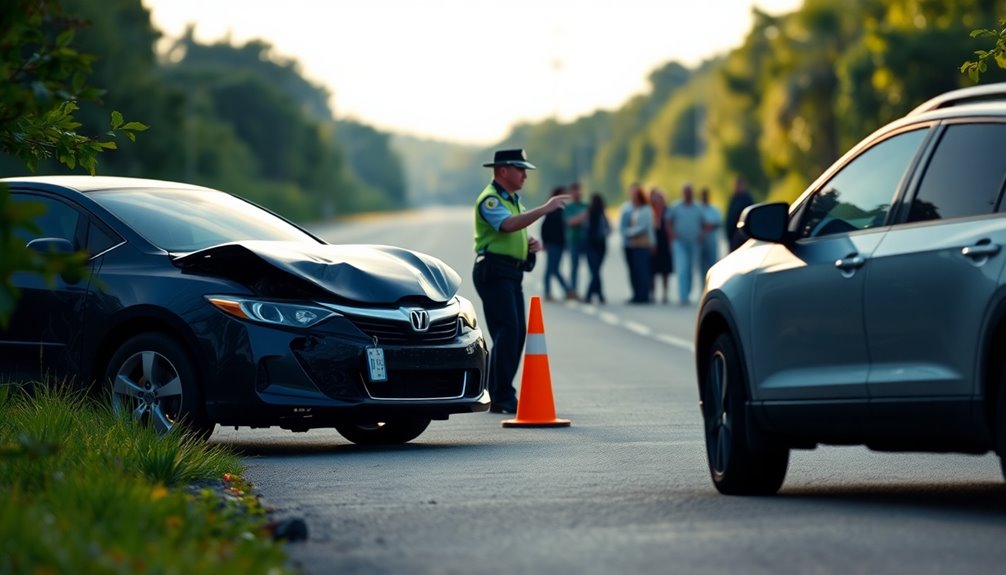
After a crash, you have specific legal responsibilities that you must follow to avoid serious consequences. First and foremost, you must stop and remain at the accident scene, especially if there are injuries or fatalities. Leaving could lead to felony charges, depending on the situation.
The law requires you to exchange information with other parties involved, including names, contact details, and insurance information. If your vehicle is struck while unattended, leave a written notice and inform the property owner of any damages.
Additionally, you must file a crash report within 10 days if there's a death, injury, or damage exceeding $1,000. Collecting evidence to prove your case is vital, so take photos and gather witness accounts at the scene.
This evidence, along with the police report, will be indispensable for your car accident attorney or personal injury attorney when building your case. By understanding and fulfilling these legal responsibilities, you can protect yourself and strengthen your position should you need to pursue a claim.
When to Move Your Vehicle
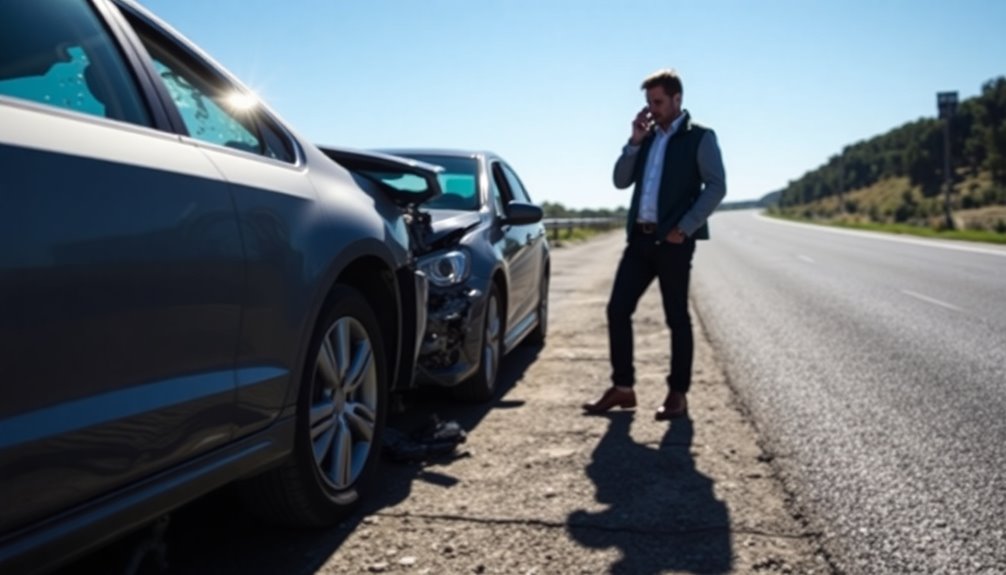
Knowing when to move your vehicle after a crash can greatly impact safety for everyone involved. If your vehicle is obstructing traffic and it's safe to do so, you should move your vehicle to reduce the risk of secondary accidents. Leaving vehicles in the roadway increases the chances of further collisions, especially in busy areas.
Before you relocate, always check for injuries among all occupants. If no serious injuries are reported and damage is minimal, moving the vehicle allows for an easier exchange of information between all parties involved.
In hazardous locations, like busy highways, it's essential to move to a safe area to protect everyone and prevent additional incidents.
When you do move the vehicle, remember to use your hazard lights to signal your movement to other drivers. This is especially important in low visibility conditions or at night to enhance safety during the relocation process.
However, if there are serious injuries, don't move the vehicle; instead, call for emergency assistance immediately. Prioritizing safety guarantees that everyone involved can manage the aftermath of the crash more effectively.
When Not to Move Your Vehicle
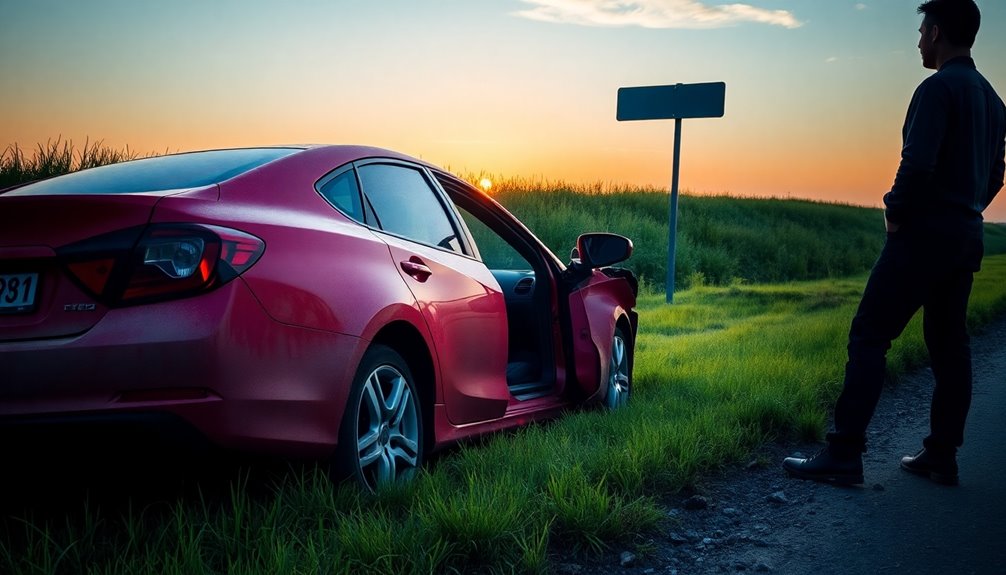
You shouldn't move your vehicle if there are serious injuries involved, as this might worsen the situation for those affected.
If hazardous conditions, like smoke or fuel leaks, exist, your priority should be to evacuate the area instead of trying to shift the vehicle.
Staying put in these scenarios can prevent further harm and allow emergency personnel to do their jobs safely.
Serious Injuries Present
When serious injuries are present, it's vital to avoid moving the vehicle, as doing so can worsen the harm to those affected. Instead, focus on ensuring that emergency responders can access the scene and provide medical assistance to anyone injured.
Moving a vehicle involved in an accident can hinder efforts to investigate the situation properly, especially in fatal accidents where evidence is significant.
Here are some key points to keep in mind:
- If someone is trapped inside the vehicle, don't attempt to move it; call for emergency help immediately.
- Vehicles must remain in place to allow for a proper investigation by authorities.
- Evacuate the area if there are signs of fire or explosion risks—smoke or fuel leaks.
- Emergency responders need immediate access to victims in serious crashes to offer the necessary medical assistance.
Hazardous Conditions Exist
Hazardous conditions can arise unexpectedly after a vehicle crash, making it critical to assess the situation before taking any action. If serious injuries are present or someone is trapped in a vehicle, moving your vehicle can complicate emergency response efforts.
Here's a quick guide to help you understand when not to move your vehicle:
| Condition | Action to Take | Reason |
|---|---|---|
| Serious injuries or fatalities | Wait for professional assistance | To avoid hindering emergency efforts |
| Smoke or fuel leaks | Evacuate the area | Risk of fire or explosion |
| Hazardous materials involved | Do not move the vehicle | Prevent spills or further dangers |
Legal implications can arise from moving vehicles in specific scenarios. If you move your car and it compromises an investigation, you could face repercussions. Always prioritize safety and wait for professionals to assess the situation before considering any action. Remember, your safety and that of others is paramount in these hazardous conditions.
Best Practices for Vehicle Relocation
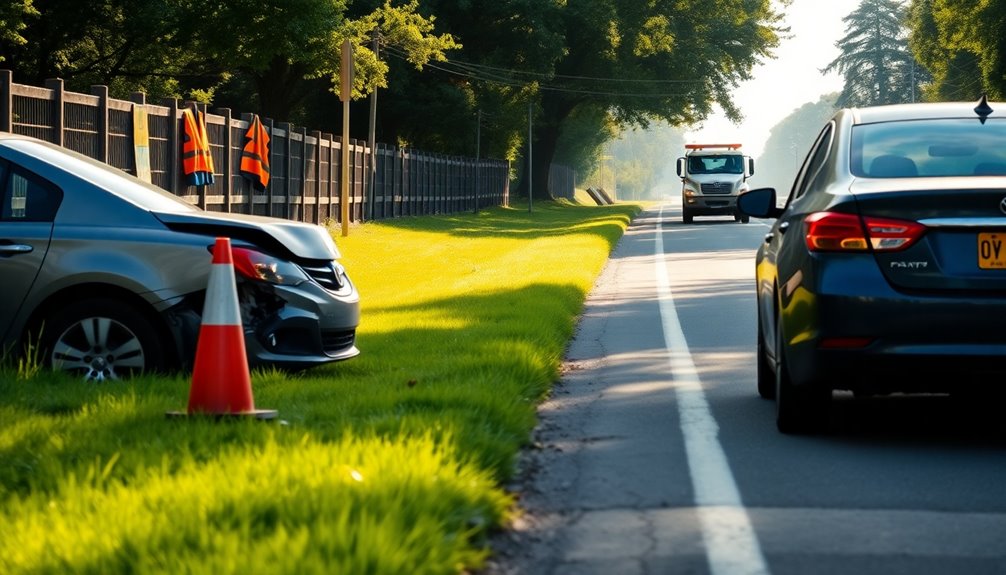
When you're in a minor accident, your first step should be to assess the safety of everyone involved before moving your vehicle.
Once you've confirmed everyone's alright, it's essential to exchange information with the other drivers to keep everything documented.
If necessary, don't hesitate to notify authorities to report the incident properly.
Assess Safety First
Prioritizing safety is essential after a vehicle crash, and it's important to check for injuries among everyone involved before considering any relocation.
You should assess safety first to determine whether it's safe to move your car. If the situation allows, relocate your vehicle to an emergency shoulder, median, or another safe area to avoid obstructing traffic. Always use hazard lights to signal your movement, especially in low visibility conditions or at night.
Here are some best practices to follow:
- Check for injuries among all parties involved in the accident.
- If serious injuries are present or there's significant vehicle damage, wait for the police or first responders to arrive.
- Only move your car if it's safe to do so and won't cause further danger.
- After ensuring everyone's safety, exchange information with the other parties involved.
Exchange Information Later
After guaranteeing everyone's safety following a crash, it's time to think about relocating your vehicle. If your car is causing traffic congestion or posing a risk of further accidents, move it to a safer spot like the shoulder of the road or a nearby parking lot. Clearing the roadway promptly helps maintain safety for all drivers and pedestrians.
Before you move your vehicle, confirm that no one is injured. Your priority should be everyone's well-being; once you've assessed for injuries, you can proceed.
Don't forget to activate your hazard lights to alert other drivers, especially in low visibility situations.
After relocating your vehicle, you can exchange information with the other parties involved in the accident. It's important to share insurance and contact details, but doing so after moving helps prevent additional hazards on the road.
Notify Authorities If Necessary
Although you've moved your vehicle to a safer location, it's vital to assess whether notifying the authorities is necessary. If anyone's injured or there's significant damage, you should call 911 right away.
Texas law requires a crash report to be filed within 10 days for accidents involving injuries or damages exceeding $1,000. Notifying authorities is important for proper documentation and to help determine fault for insurance claims.
Here are some best practices to follow:
- Call 911 if there are injuries or significant damage.
- Move your vehicle only if it's safe and won't cause further accidents.
- Notify authorities if you observe crash scene debris or property damage.
- Always prioritize safety and verify moving your vehicle doesn't put you or others at risk.
Importance of Legal Assistance

Steering through the aftermath of a vehicle crash can be overwhelming, and having legal assistance can make a significant difference. The importance of legal assistance can't be overstated, especially if you're seriously injured. Personal Injury Attorneys bring decades of experience to the table, guiding you through the complexities of insurance claims and ensuring you understand your rights and responsibilities.
When you engage a lawyer, they can help you pursue compensation for medical expenses and property damage, alleviating financial burdens that often follow an accident. If someone else is at fault, your attorney can work to hold them accountable, increasing your chances of recovering damages for your injuries.
Many attorneys offer free consultations, making it easier for you to seek legal advice without any initial costs. This accessibility allows you to explore your options and understand the potential outcomes of your case.
Relying on legal expertise not only clarifies your situation but also empowers you to make informed decisions as you navigate this challenging time. Don't underestimate the value of having a dedicated professional by your side to advocate for your rights and well-being.
Safe Driving Practices and Prevention
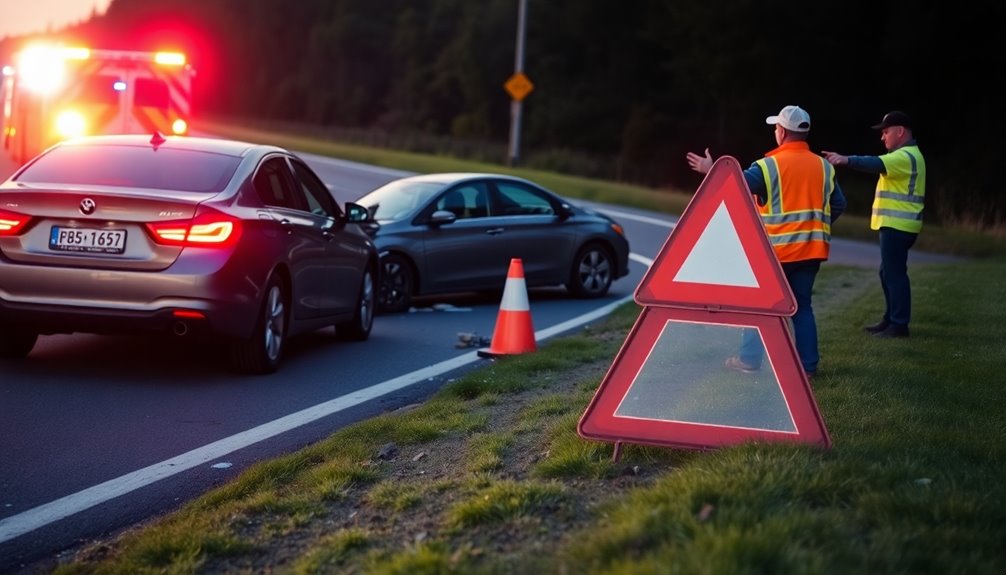
Safe driving practices are essential for protecting yourself and others on the road. With a reportable crash occurring every 57 seconds in Texas, it's important to be proactive in preventing accidents.
Here are some key practices to keep in mind:
- Obey traffic laws: Following speed limits and signals can greatly reduce car crashes.
- Adjust your speed: Weather conditions can change quickly; slowing down can prevent serious injuries.
- Watch for oncoming traffic: Intersections are high-risk areas, so always double-check before proceeding.
- Avoid distractions: Keep your focus on the road to minimize risks.
Driving under the influence is never an option; it accounted for 26% of total crash deaths.
If you find yourself in an accident, knowing how to move vehicles safely is imperative. Implementing safe driving habits not only safeguards your life but also enhances overall road safety.
Frequently Asked Questions
What Is the Rule for Moving Vehicles off the Road After a Crash Quizlet?
When you're involved in a minor accident, you can usually move your vehicle off the road to prevent traffic issues.
It's key to do this safely to avoid further collisions. However, if there are serious injuries or hazards, wait for emergency responders before moving anything.
Always document the scene first; it helps with insurance claims later on.
What Is the Oregon Law on Car Accidents?
When you find yourself in a car accident, remember, "An ounce of prevention is worth a pound of cure."
In Oregon, you're required to move your vehicle off the roadway if it's safe, to prevent further accidents.
If there are injuries or significant damage, notify the police immediately.
Failing to follow these laws can result in fines or penalties, so it's essential to stay informed and act responsibly after a crash.
What Are My Rights in a Car Accident in Texas?
In Texas, you've got rights if you're involved in a car accident. You can exchange information with other parties and must file a crash report within 10 days if there's injury or damage over $1,000.
You can also collect evidence like photos and witness statements to support your case. Plus, you can pursue legal action against the at-fault driver for any damages you incur.
Always guarantee you have liability insurance for protection.
How Long After an Accident Can Police Charge You?
After an accident, police can charge you anytime if they gather new evidence or discover violations during their investigation.
In cases involving injury or death, the timeline for charges can extend as law enforcement reviews the situation.
If the crash results in damages exceeding $1,000, a report must be filed within ten days, which may influence potential charges.
Always remember, leaving the scene can lead to serious legal consequences.
Conclusion
In conclusion, staying safe and smart after a crash is essential. You should assess the situation, adhere to legal responsibilities, and know when to shift your vehicle. Moving promptly can prevent perilous pile-ups, but always prioritize safety first. If you're uncertain, seeking savvy legal support can save you stress. Remember, practicing precautionary driving habits helps keep collisions at bay. By being proactive, you pave the path for safer streets and smoother journeys ahead.





